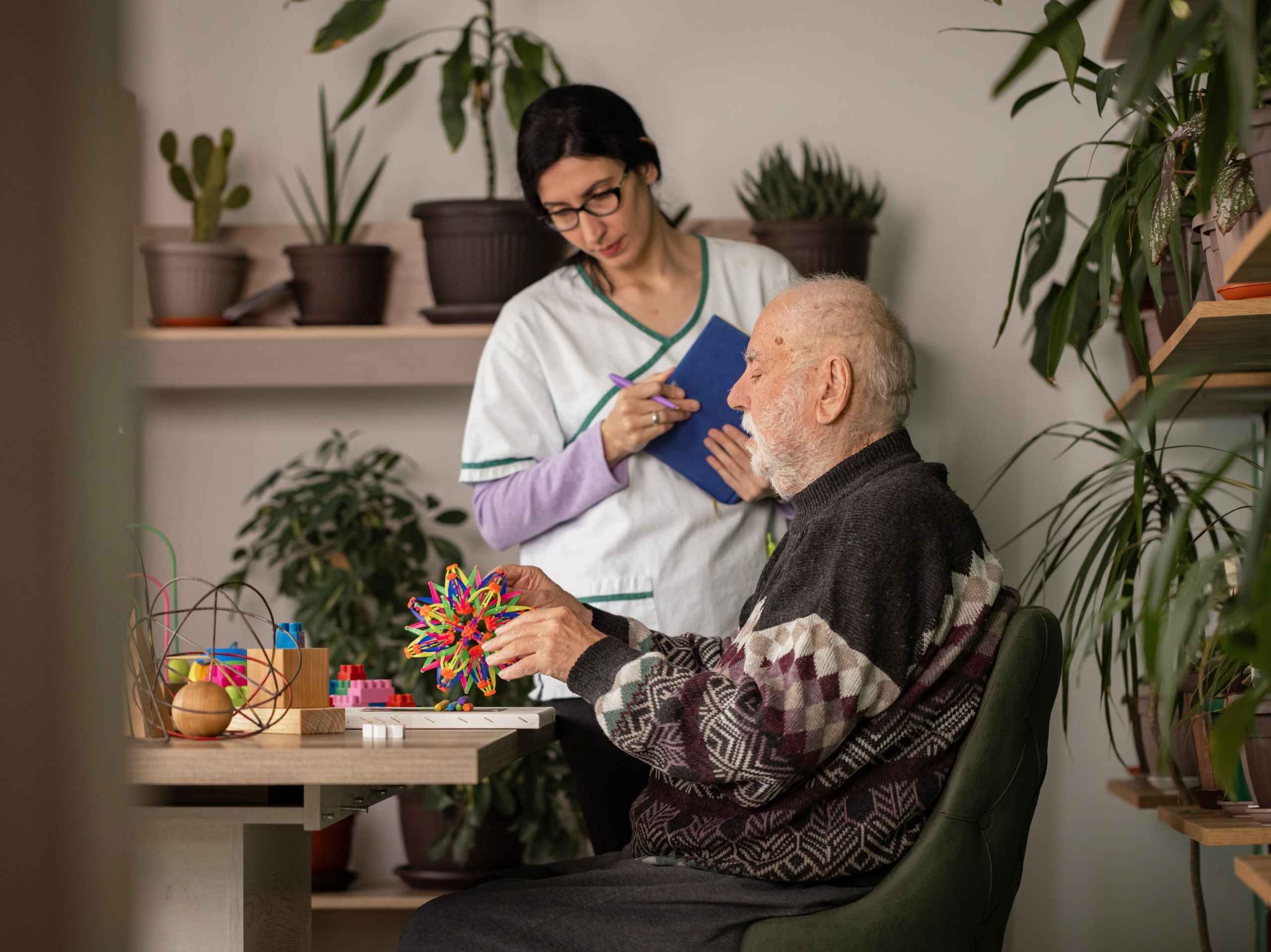Housing is key to independence and a better quality of life for many NDIS participants. Medium Term-Accommodation WA provides a temporary place to stay while waiting for permanent options like Supported Independent Living (SIL) or Specialist Disability Accommodation (SDA). Moving from MTA to a permanent home can be tricky and needs careful planning and support. That’s where Reaching Abilities helps—offering guidance to make the move easier for participants and their families. This guide explains what MTA is, the challenges of moving, and how Reaching Abilities can help make the transition smooth.
What Is Medium-Term Accommodation WA Offers?
MTA is a temporary housing option provided through the National Disability Insurance Scheme (NDIS) in Australia. It is meant to help people with disabilities who need a place to stay for a short time while they wait for their permanent home to be ready.
What is MTA and Who is it For?
Medium Term Accommodation in WA is for people who are part of the NDIS and have been approved for special types of housing, like Supported Independent Living (SIL) or Specialist Disability Accommodation (SDA). These are long-term housing for participants, but sometimes, there can be delays in moving in. MTA is like a “bridge” that gives participants a safe and comfortable place to stay in the meantime.
People who can use MTA include:
- Those who are leaving a hospital or rehabilitation centre but don’t have their permanent home ready yet.
- Those leaving other care environments, like nursing homes, who need somewhere temporary to stay while their long-term housing is being prepared.
Key Features and Benefits of MTA
- Stability: MTA helps people feel safe and secure during times of transition. Moving out of one place without having a permanent home ready can be stressful. MTA provides a stable temporary living arrangement where participants can feel at ease.
- Support Services: While staying in MTA, participants can get the help they need to live comfortably. This includes services like personal care (help with things like getting dressed or cooking meals), transportation to appointments, and access to community activities. These services are tailored to meet the unique needs of each person.
- Flexibility: MTA is not a one-size-fits-all solution. The length of stay can be adjusted to fit each person’s situation. Usually, MTA is available for up to 90 days, but this can depend on how long it takes for their permanent housing to be ready.
Why is MTA Important?
MTA makes sure that NDIS participants don’t feel stranded or unsupported while they wait for their long-term home to become available. It helps reduce stress, provides access to the services they need, and ensures they have a comfortable, safe place to live, even if just for a short period.
In short, MTA is a helpful option that gives people with disabilities the support they need during times of change, helping them move smoothly toward their permanent living arrangements.
Challenges in Transitioning to Permanent Housing
Despite being a vital part of the NDIS housing framework, transitioning from MTA to permanent housing isn’t always straightforward. Several obstacles can arise along the way, including logistical, financial, and emotional hurdles.
Availability Issues
NDIS permanent housing options—especially Specialist Disability Accommodation (SDA)—can be limited in supply, particularly in high-demand regions like Western Australia. Delays in securing suitable housing may extend the participant’s time in MTA.
Funding Delays
Navigating the NDIS approval process can sometimes create delays. Adjusting budgets to accommodate the transition to permanent housing, or awaiting decisions regarding SDA eligibility, may complicate timelines.
Emotional and Practical Adjustments
Moving from MTA to permanent housing often requires significant adaptation. Participants must establish new routines, adjust to unfamiliar environments, and build confidence in their independence.
Coordination Between Stakeholders
A successful NDIS housing transition demands seamless communication among multiple parties, including support coordinators, service providers, housing organisations, and families. Misaligned priorities or communication gaps can slow progress and increase stress.
Recognising these challenges is the first step to overcoming them. With thoughtful planning and collaboration, the process can be navigated more smoothly.
Steps for a Successful Transition
A well-thought-out plan can help NDIS participants feel confident and prepared when moving into permanent housing. Here’s a simple guide for support coordinators, guardians, and families to work together and make the transition smooth and stress-free.
Step 1: Create a Housing Plan
Start by making a detailed plan that focuses on what the participant needs and wants in their new home.
- Think about important things like location (close to family or friends), accessibility (for example, wheelchair ramps), and nearby essential services like shops or medical clinics.
- Write down how much funding is needed and when it’s needed, making sure it matches up with the participant’s NDIS plan.
- Most importantly, talk to the participant about their preferences. What kind of home do they imagine? What makes them feel comfortable? Including their input is essential to getting this right.
Step 2: Work with Everyone Involved
Good communication is key when many people are part of the process. You’ll need to connect with housing providers, support organisations, and NDIS planners.
- Reach out to local housing organisations to find homes that match the participant’s needs.
- Work with the NDIS representatives to get approval for funding and finalise the participant’s budget for disability housing services.
Step 3: Help the Participant Prepare
Moving is not just about logistics—it’s a big emotional change too. Spend time preparing the participant both emotionally and practically for their new home.
- Take them to visit potential housing options so they can get familiar with the places. Seeing the options in person can help them feel more comfortable.
- Let them ask lots of questions and involve them in decisions about their housing. This way, they feel in control and confident.
- Offer emotional support throughout the process. Moving can be scary, but having someone to reassure them and listen to their worries can make a big difference.
Step 4: Put the Right Supports in Place
To help the participant settle into their new home, make sure they have the supports they need.
- Arrange for allied health services, like occupational therapy, to help them adjust to their new environment. For example, an occupational therapist can help set up the home to meet their needs.
- Coordinate other supports, like in-home care (if needed), transportation services to get around, or help with accessing the community so they can stay connected to friends and activities.
Step 5: Keep Checking In
Even after the participant has moved into their new home, it’s important to make sure everything is going well.
- Regularly check in with the participant to see how they’re feeling. Are they comfortable? Are there any problems that need solving?
- Stay in touch with service providers to make adjustments to their support plan if needed. For example, if they need more help with daily tasks or transportation, you can arrange it quickly.
By taking these steps, support teams and families can help NDIS participants feel safe, supported, and happy in their new homes. The goal is to make the move smooth and ensure they have everything they need to succeed in their new life.
Reaching Abilities’ Approach to Housing Transitions
At Reaching Abilities, we believe that every participant deserves a seamless and empowering transition to permanent housing. Our experienced team works closely with NDIS participants, their families, and support coordinators to make every move as successful as possible.
Tailored Planning
We craft personalised NDIS participant housing plans that align with each participant’s goals, needs, and preferences. Our focus is on creating a roadmap that sets up participants for long-term success.
Comprehensive Support
Reaching Abilities collaborates with all stakeholders, from NDIS planners to SDA providers, ensuring no detail is overlooked. Our team takes care of the logistics, so you can focus on supporting your loved one.
Family-Focused Approach
We treat every participant and their family like our own, offering a compassionate and attentive approach during this important life transition.
Real-Life Impact
Case Study
When 36-year-old Michael needed to transition from MTA to an SDA home in Perth, Reaching Abilities guided every step of the way. From liaising with service providers to preparing Michael for his new environment, we ensured a smooth and stress-free move. Today, Michael flourishes in his new home, with support systems that enable his independence and happiness.
With Reaching Abilities by your side, you can trust that your family member’s transition will be in safe hands.
Frequently Asked Questions (FAQs)
What is the purpose of Medium Term Accommodation under the NDIS?
Medium Term Accommodation in WA provides temporary housing for participants awaiting permanent housing, ensuring stability and access to essential supports during transitional periods.
How long can NDIS participants stay in Medium Term Accommodation?
MTA typically covers up to 90 days, though the actual duration may vary depending on individual plans and housing availability.
What support does Reaching Abilities provide during the transition to permanent housing?
We assist with personalised housing plans, stakeholder coordination, emotional support, and ongoing care to facilitate seamless transitions for participants.
Can NDIS funding cover permanent housing costs?
Yes, NDIS plans may include funding for SDA or other approved long-term housing options, depending on eligibility and participant assessments.
Empower NDIS Participants with Seamless Housing Transitions
Moving from Medium Term Accommodation to a permanent home is a big step for NDIS participants. With good planning and support, it can lead to an exciting new chapter in life. At Reaching Abilities, we’re here to help make the process easier. Our team works closely with you to create personalised plans, focusing on your goals and needs. We believe in a family-first approach, so you feel confident and supported every step of the way. Need help with your move to permanent housing? Contact Reaching Abilities today to learn how we can support you!

Ozer Tanlasi – Founder and Director of Reaching Abilities
Ozer Tanlasi is the Founder and Director of Reaching Abilities, an organisation dedicated to providing compassionate and empowering support to individuals with disabilities. With a background in allied health and a deep commitment to inclusive care, Ozer established Reaching Abilities to create a welcoming space where individuals can thrive, gain independence, and achieve their personal goals. Her approach is centred around understanding each individual’s unique needs and strengths, ensuring they receive tailored services that make a positive impact on their lives. Under Ozer’s leadership, Reaching Abilities has become known for its compassionate, client-focused approach, supporting individuals and families in building meaningful connections and reaching new potentials.






